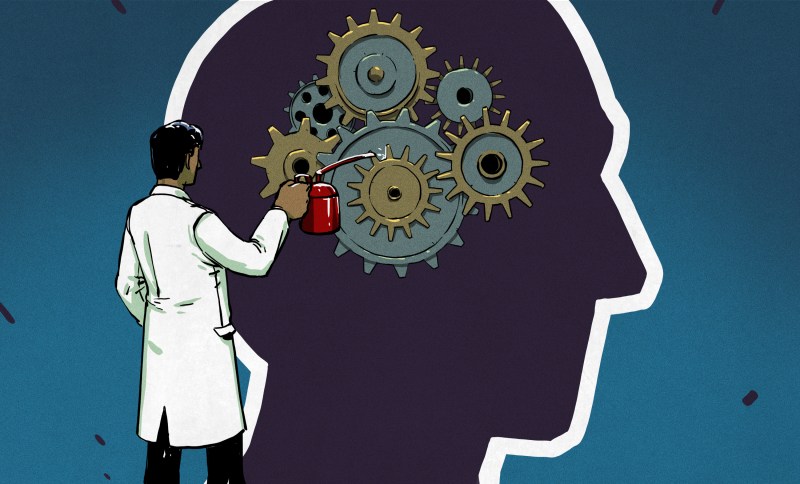Last week, I stumbled on a marvelous book: “Giant Brains; or, Machines That Think” by Edmund Callis Berkeley. What’s really fun about it is the way it sounds like it could be written just this year – waxing speculatively about the future when machines do our thinking for us. Except it was written in 1949, and the “thinking machines” are early proto-computers that use relays (relays!) for their logic elements. But you need to understand that back then, they could calculate ten times faster than any person, and they would work tirelessly day and night, as long as their motors keep turning and their contacts don’t get corroded.
 But once you get past the futuristic speculation, there’s actually a lot of detail about how the then-cutting-edge machines worked. Circuit diagrams of logic units from both the relay computers and the brand-new vacuum tube machines are on display, as are drawings of the tricky bits of purely mechanical computers. There is even a diagram of the mercury delay line, and an explanation of how circulating audio pulses through the medium could be used as a form of memory.
But once you get past the futuristic speculation, there’s actually a lot of detail about how the then-cutting-edge machines worked. Circuit diagrams of logic units from both the relay computers and the brand-new vacuum tube machines are on display, as are drawings of the tricky bits of purely mechanical computers. There is even a diagram of the mercury delay line, and an explanation of how circulating audio pulses through the medium could be used as a form of memory.
All in all, it’s a wonderful glimpse at the earliest of computers, with enough detail that you could probably build something along those lines with a little moxie and a few thousands of relays. This grounded reality, coupled with the fantastic visions of where computers would be going, make a marvelous accompaniment to a lot of the breathless hype around AI these days. Recommended reading!















Same with perceptron.
https://youtu.be/e5dVSygXbAE
Sean Haas of Advent of Computing podcast did a nice job of featuring this book in his recent “Computer …Books?” podcast here:
https://podcasts.apple.com/us/podcast/episode-131-computer-books/id1459202600?i=1000654614039&uo=4
I have always associated Edmund C. Berkeley with the Brainiac / Geniac devices sold in the late 1950’s. There was no internet so all the product promotion was via printed advertising. The marketing was everywhere, and tens of thousands of these things were sold for $20 a pop – and $20 was actually worth something in 1958.
When I finally saw a Brainiac, even as an adolescent, I laughed in disbelief. I felt that it was a disappointing fraud. There was no way that the hardware matched the hype in its advertising. It was simply 6 rotary switches poorly made from masonite. I had already designed an autonomous light seeking robot controlled by relays – Brainiac was just a bad joke.
However, somebody made a lot of money selling these things, and therein was the brilliance.
https://en.wikipedia.org/wiki/Geniac
http://www.computercollector.com/cgi-bin/exec/compcol/menu-st.cgi?directory=/archive/geniac/astound&mode=1&image=geniacamazing
This was one of my favorite books as a kid in the early-mid 1980’s, probably bought at a library book sale. Literally the first book on computing I ever read. I misplaced my copy sometime in the past decade, and went online to look for a replacement last year. Managed to find a nice copy (in better condition than the one that had to survive my childhood) that fell through the cracks for $50.00, while gasping at the asking prices for other copies listed online. Somewhere out there, is an inattentive AbeBooks pricer to whom I owe much thanks.
I read this book when I was in fifth grade. It was typical of the electronics and computer books that were available in my local library, being mostly obsolete even then (the mid-1960s). I also read “The Boy’s First Book of Radio and Electronics”, as well as the Second, Third, and so on. That was my early bootstrapping, which means that I was fully schooled in vacuum tube technology at a time when transistor radios were all the rage. But they got me to the point where I could make sense out of some of the projects in Popular Electronics and Radio and Electronics magazines, which were the second-level boot. I like to think I’m still learning, although these days I’m not sure whether I’m learning new things or just re-learning things I’ve forgotten…
Ha, this is exactly my experience. I grew up around that time and all the books in the small-town library were ancient even then. When I went to college my mind was blown by the library. That’s where I first saw Dr. Dobb’s Journal, too…
I remember the Boy’s books. I also loved the Scientific American Amateur Scientist book, I should probably write about that sometime again (I’m sure I have somewhere already).
the human brain is not a computer
@metalman — nickname sends confusing vibes…
But absolutely true. It’s fun in a late-50s way, though, to pretend that it did.
OTOH, the leap he makes from “words can be encoded into numbers” to essentially presaging the LLMs wave of the last couple years looks pretty good in retrospect.